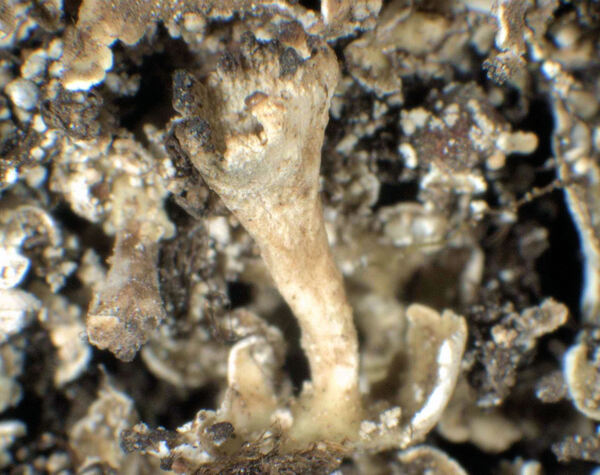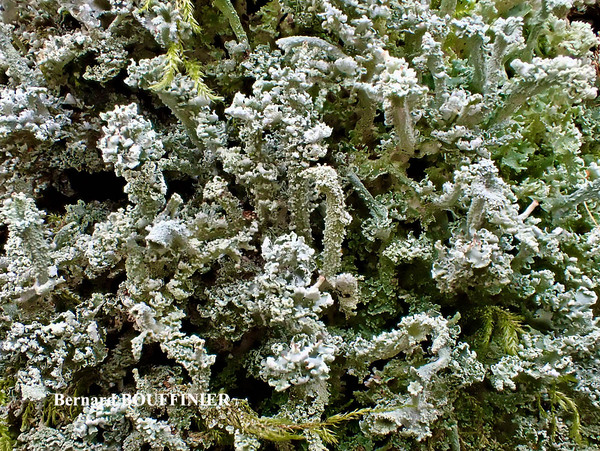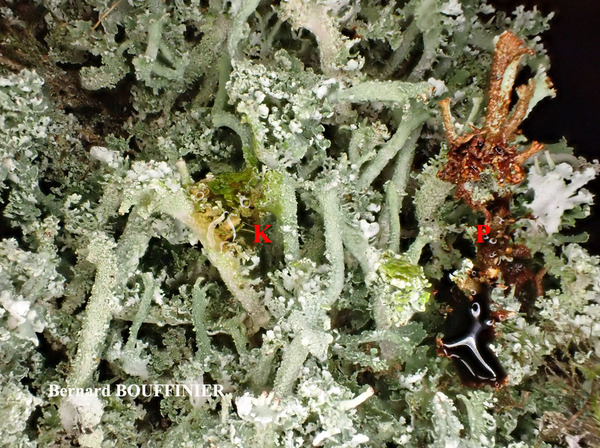Cladonia cyathomorpha Walt. Watson
Stirt. ex Walt. Watson, J. Bot., 73: 156, 1935.
Synonyms:
Distribution: C - Sar (Zedda 2002, Burgaz & al. 2020). S - Cal (Puntillo 1995, Puntillo 1996, Burgaz & al. 2020), Si (Burgaz & al. 2020).
Description: Primary thallus squamulose, the squamules persistent, large, 4-10(-20) mm long, 5-8 mm wide, rounded to indented, more or less ascending, grey-green, slightly pruinose and often phyllidiate-schizidiate above and along the margins, white, floccose, and with distinct pinkish to brownish veins below. Podetia goblet-shaped, hollow inside, glaucous grey to brown, yellowish and corticate at base, to 1(-2) cm tall, 1-2 mm thick, the cups 3-7 mm wide, inside densely covered with bullate, pruinose phyllidia. Apothecia very rare, brown, convex. Asci 8-spored, clavate, thickened at apex, with a K/I+ blue tholus and a K/I+ strongly blue outer gelatinous sheath, Cladonia-type. Ascospores 1-celled, hyaline, ellipsoid. Pycnidia common along the margins of cups, pyriform, with a colourless jelly. Conidia hyaline, curved. Photobiont chlorococcoid. Spot tests: K- or K+ yellowish slowly turning brown, C-, KC-, P+ red, UV-. Chemistry: fumarprotocetraric acid complex, rarely with an additional, unconstant unidentified compound.Note: a mainly western species in Europe found on epilithic bryophytes and on mosses in the basal parts of trees in very humid areas; probably slightly more widespread, but never common, in Tyrrhenian Italy.
Growth form: Fruticose
Substrata: soil, terricolous mosses, and plant debris
Photobiont: green algae other than Trentepohlia
Reproductive strategy: mainly asexual, by soredia, or soredia-like structures (e.g. blastidia)
Most common in areas with a humid-warm climate (e.g. most of Tyrrenian Italy)
Commonnes-rarity: (info)
Alpine belt: absent
Subalpine belt: absent
Oromediterranean belt: absent
Montane belt: very rare
Submediterranean belt: absent
Padanian area: absent
Humid submediterranean belt: very rare
Humid mediterranean belt: extremely rare
Dry mediterranean belt: absent
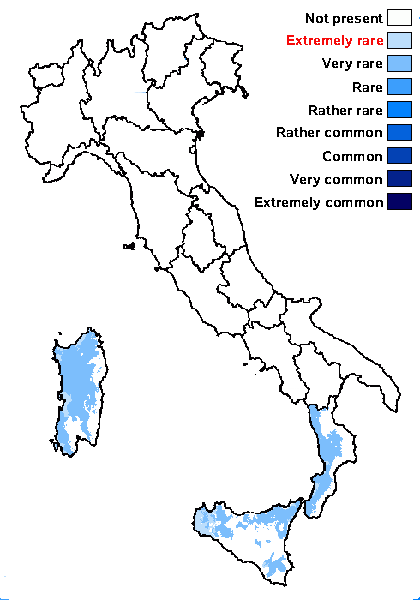
Predictive model
Herbarium samples


Felix Schumm CC BY-SA 4.0
[8459], PORTUGAL, MADEIRA: Rabacal, Lorbeerwald bei 25 Fontes, N 32°45.699, W 17°8.051, 1069 m.
Leg. F. Schumm 12.04.2001, det. Aptroot 2010
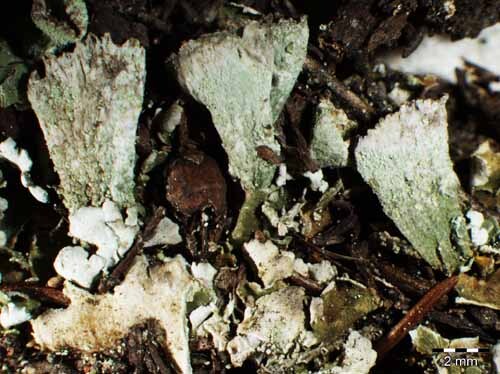
Harrie Sipman – Source http://www.bgbm.fu-berlin.de/sipman/Zschackia/AegeanLichens/CaloplacaAC.htm - As Caloplaca oasis
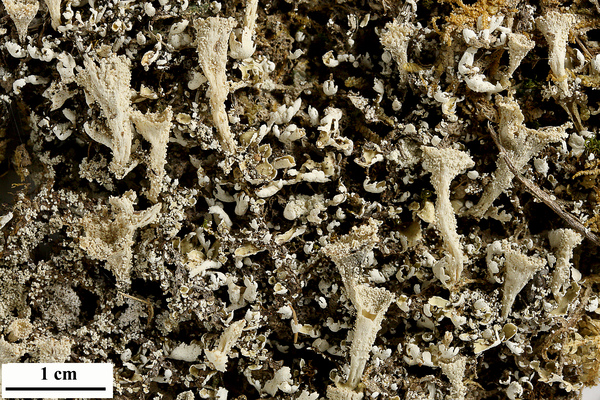

Felix Schumm – CC BY-SA 4.0
[8459], PORTUGAL, MADEIRA: Rabacal, Lorbeerwald bei 25 Fontes, N 32°45.699, W 17°8.051, 1069 m. Leg. F. Schumm 12.04.2001, det. Aptroot 2010


Felix Schumm – CC BY-SA 4.0
[8459], PORTUGAL, MADEIRA: Rabacal, Lorbeerwald bei 25 Fontes, N 32°45.699, W 17°8.051, 1069 m. Leg. F. Schumm 12.04.2001, det. Aptroot 2010
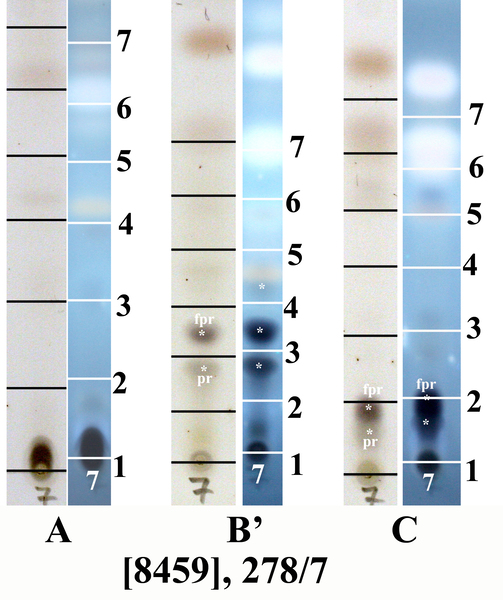

Felix Schumm – CC BY-SA 4.0
[8459], PORTUGAL, MADEIRA: Rabacal, Lorbeerwald bei 25 Fontes, N 32°45.699, W 17°8.051, 1069 m. Leg. F. Schumm 12.04.2001, det. Aptroot 2010,
HPTLC in den Laufmitteln A, B’ und C nach Säurebehandlung bei Tageslicht und 366 nm UV-Langwelle. 1= Start, 4= Position von Norstictinsäure, 7= Position von Atranorin, pr: Protocetrarsäure, fpr: Fumarprotocetrarsäure
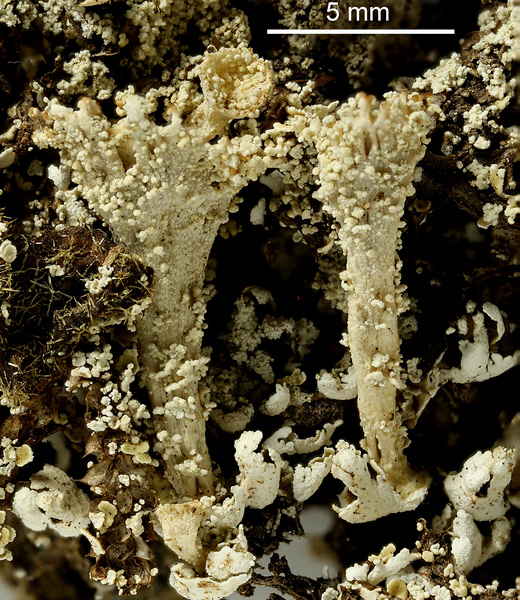

Felix Schumm – CC BY-SA 4.0
[8459], PORTUGAL, MADEIRA: Rabacal, Lorbeerwald bei 25 Fontes, N 32°45.699, W 17°8.051, 1069 m. Leg. F. Schumm 12.04.2001, det. Aptroot 2010
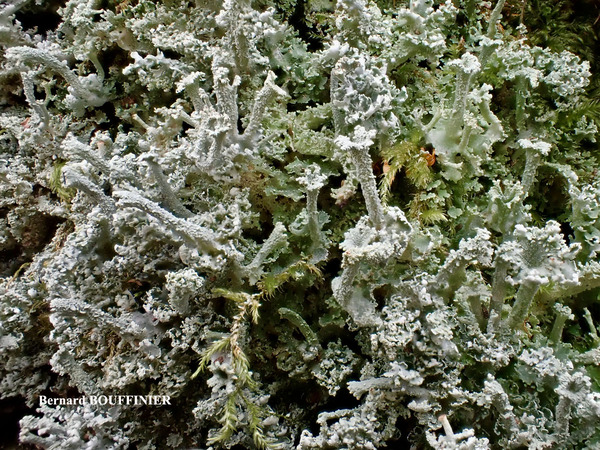
Bernard Bouffinier - Source: http://www.lichensmaritimes.org/index.php?task=fiche&lichen=1167&lang=en
France, Landévennec
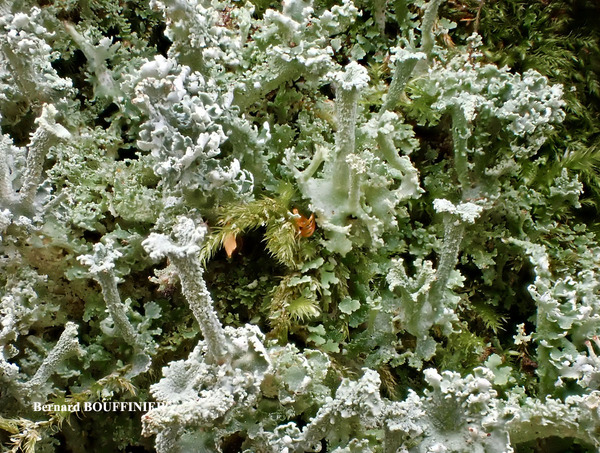
Bernard Bouffinier - Source: http://www.lichensmaritimes.org/index.php?task=fiche&lichen=1167&lang=en
France, Landévennec
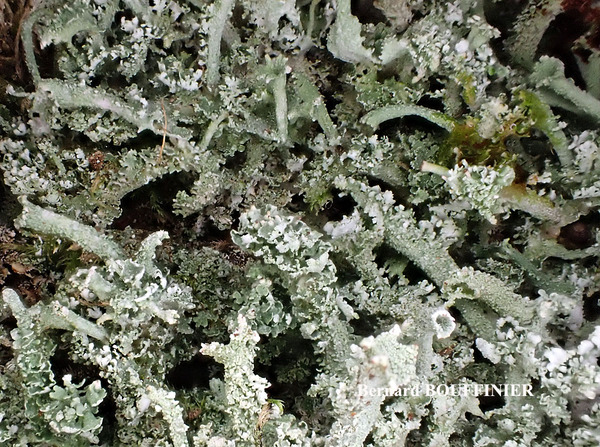
Bernard Bouffinier - Source: http://www.lichensmaritimes.org/index.php?task=fiche&lichen=1167&lang=en
France, Landévennec
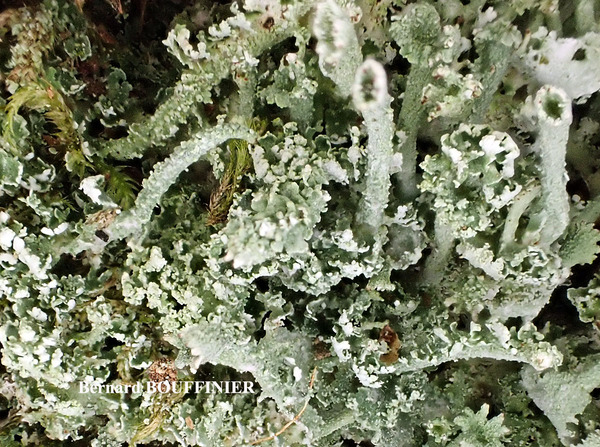
Bernard Bouffinier - Source: http://www.lichensmaritimes.org/index.php?task=fiche&lichen=1167&lang=en
France, Landévennec
Growth form: Fruticose
Substrata: soil, terricolous mosses, and plant debris
Photobiont: green algae other than Trentepohlia
Reproductive strategy: mainly asexual, by soredia, or soredia-like structures (e.g. blastidia)
Most common in areas with a humid-warm climate (e.g. most of Tyrrenian Italy)
Commonnes-rarity: (info)
Alpine belt: absent
Subalpine belt: absent
Oromediterranean belt: absent
Montane belt: very rare
Submediterranean belt: absent
Padanian area: absent
Humid submediterranean belt: very rare
Humid mediterranean belt: extremely rare
Dry mediterranean belt: absent

Predictive model
| Herbarium samples |


Felix Schumm CC BY-SA 4.0
[8459], PORTUGAL, MADEIRA: Rabacal, Lorbeerwald bei 25 Fontes, N 32°45.699, W 17°8.051, 1069 m.
Leg. F. Schumm 12.04.2001, det. Aptroot 2010

Harrie Sipman – Source http://www.bgbm.fu-berlin.de/sipman/Zschackia/AegeanLichens/CaloplacaAC.htm - As Caloplaca oasis


Felix Schumm – CC BY-SA 4.0
[8459], PORTUGAL, MADEIRA: Rabacal, Lorbeerwald bei 25 Fontes, N 32°45.699, W 17°8.051, 1069 m. Leg. F. Schumm 12.04.2001, det. Aptroot 2010


Felix Schumm – CC BY-SA 4.0
[8459], PORTUGAL, MADEIRA: Rabacal, Lorbeerwald bei 25 Fontes, N 32°45.699, W 17°8.051, 1069 m. Leg. F. Schumm 12.04.2001, det. Aptroot 2010


Felix Schumm – CC BY-SA 4.0
[8459], PORTUGAL, MADEIRA: Rabacal, Lorbeerwald bei 25 Fontes, N 32°45.699, W 17°8.051, 1069 m. Leg. F. Schumm 12.04.2001, det. Aptroot 2010,
HPTLC in den Laufmitteln A, B’ und C nach Säurebehandlung bei Tageslicht und 366 nm UV-Langwelle. 1= Start, 4= Position von Norstictinsäure, 7= Position von Atranorin, pr: Protocetrarsäure, fpr: Fumarprotocetrarsäure


Felix Schumm – CC BY-SA 4.0
[8459], PORTUGAL, MADEIRA: Rabacal, Lorbeerwald bei 25 Fontes, N 32°45.699, W 17°8.051, 1069 m. Leg. F. Schumm 12.04.2001, det. Aptroot 2010

Bernard Bouffinier - Source: http://www.lichensmaritimes.org/index.php?task=fiche&lichen=1167&lang=en
France, Landévennec

Bernard Bouffinier - Source: http://www.lichensmaritimes.org/index.php?task=fiche&lichen=1167&lang=en
France, Landévennec

Bernard Bouffinier - Source: http://www.lichensmaritimes.org/index.php?task=fiche&lichen=1167&lang=en
France, Landévennec

 INDEX FUNGORUM
INDEX FUNGORUM
 GBIF
GBIF
